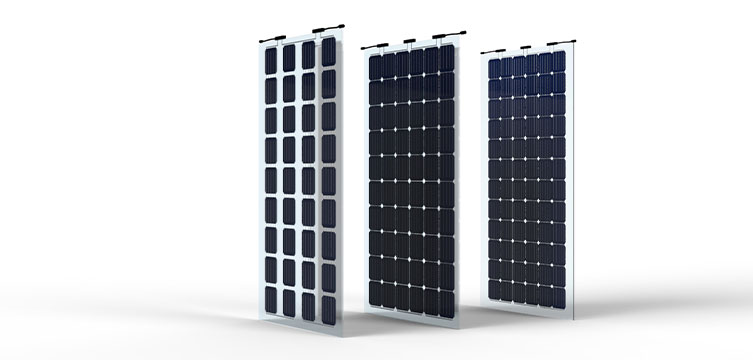Oct. 28, 2022
Solar photovoltaic glass is a kind of special glass that can use solar radiation to generate electricity by laminating into solar cells and has relevant current leading devices and cables. In simple terms, photovoltaic glass is a technology that converts light into electricity, which can be divided into crystalline silicon glass and amorphous silicon glass. Buildings that use a lot of photovoltaic glass can generate some of their own electricity through their Windows. The photovoltaic power generated is considered green or clean electricity because its source is renewable and does not cause pollution. In addition to energy cost savings, the potential benefits of using PV glass include reducing the facility's carbon footprint and promoting sustainability.
Crystalline silicon photovoltaic glass is a kind of silicon glass that can generate electricity. "In crystalline silicon PV cells, solar cells are typically connected together and then laminated under toughened, high-transmittance glass to produce reliable, climate-resistant PV modules. Basically, it's a type of glass that can generate electricity using the same technology that solar panels do.
The installed power per square foot of crystalline silicon glass is greater than that of amorphous silicon glass. This means that crystalline silicon produces more than twice the power of amorphous silicon under direct sunlight. Therefore, this photovoltaic glass technology is well suited for projects seeking maximum energy generation and facing the sun. It can be widely used in solid walls and guardrails, canopy and skylight applications, and spandrel glass. Not only the characteristics of ordinary architectural glass but also the production of clean, free energy.

1. Crystalline silicon glass can be easily customized, especially in terms of shape.
2. Crystalline silica glasses occupy a smaller area to reach a given kWp than amorphous silica glasses.
3. Crystalline silicon glass has a higher installed power per square foot.
Crystalline photovoltaic (PV) glass is emerging as a transformative material in the renewable energy sector, offering a unique blend of functionality and aesthetics. This innovative glass integrates solar cells directly into the glass substrate, making it an ideal choice for various applications, from building facades to solar panels.
One of the most significant applications of crystalline photovoltaic glass is in building-integrated photovoltaics (BIPV). This technology allows buildings to generate their own electricity while maintaining architectural integrity. For instance, crystalline PV glass can be used in windows, skylights, and curtain walls, providing both energy efficiency and natural lighting. This dual functionality not only enhances the aesthetic appeal of structures but also contributes to energy savings, making it a popular choice among architects and builders.
Another application is in solar farms, where crystalline PV glass panels can be deployed in large arrays to harness solar energy efficiently. These panels are known for their high energy conversion rates, making them a preferred option for utility-scale solar projects. The durability and longevity of crystalline PV glass also ensure that these installations require minimal maintenance over their lifespan.
Amorphous silicon is a form of silicon, the second most abundant natural element on Earth. However, it differs from silicon in that it is amorphous and disordered like ordinary glass, meaning that some of the atoms in its chemical structure cannot bind. This substance, often abbreviated as a-si, still has some advantages over crystalline silicon, making it more suitable for the manufacture of thin films for coating various electronic components, especially photovoltaic (PV) systems. For example, it can be applied to large areas at extremely low temperatures in a more uniform manner than silicon, allowing it to attach to glass, plastic, and metal.
Amorphous silicon photovoltaic glass technology based on amorphous silicon (a-Si) offers a range of attractive properties that are well-suited for building-integrated photovoltaic devices (BIPV). Solar modules can be assembled into BIPV elements dedicated to the roof and exterior walls, thus allowing the combination of various functions, namely power generation, thermal insulation, shading, and even meeting various aspects of building design.

1. On overcast days and at high temperatures, it produces more energy than crystalline silicon glass.
2. It provides variable visible light transmittance of up to 30%.
3. It provides design flexibility because it can be customized according to architectural requirements.
4. It has a very uniform appearance and is easy to clean and install.
Amorphous silicon photovoltaic (a-Si PV) glass is emerging as a versatile solution in the renewable energy sector, particularly in building-integrated photovoltaics (BIPV). This innovative material combines the properties of glass with the functionality of solar cells, allowing for seamless integration into architectural designs. The applications of a-Si PV glass are diverse, ranging from facades and skylights to windows and canopies, making it an attractive option for modern construction.
The costs associated with a-Si PV glass can be a significant consideration for potential adopters. While the initial investment may be higher than traditional glass, the long-term benefits, such as reduced energy bills and potential government incentives, can offset these costs. The price of a-Si PV technology has been decreasing over the years due to advancements in manufacturing processes and increased competition in the solar market. As a result, the cost-effectiveness of a-Si PV glass is improving, making it a more attractive option for builders and developers.
Gain Solar is a carbon-neutral solutions expert company established in 2007, which can provide green material for Building Integrated Photovoltaics (BIPV).
Gain Solar BIPV products include solar facades, solar glass, solar roof tile, siding, greenhouses, railings, and more. These systems have frameless modules, hidden mounting, and homogeneous surfaces, and can feature the appearance of any material or color.